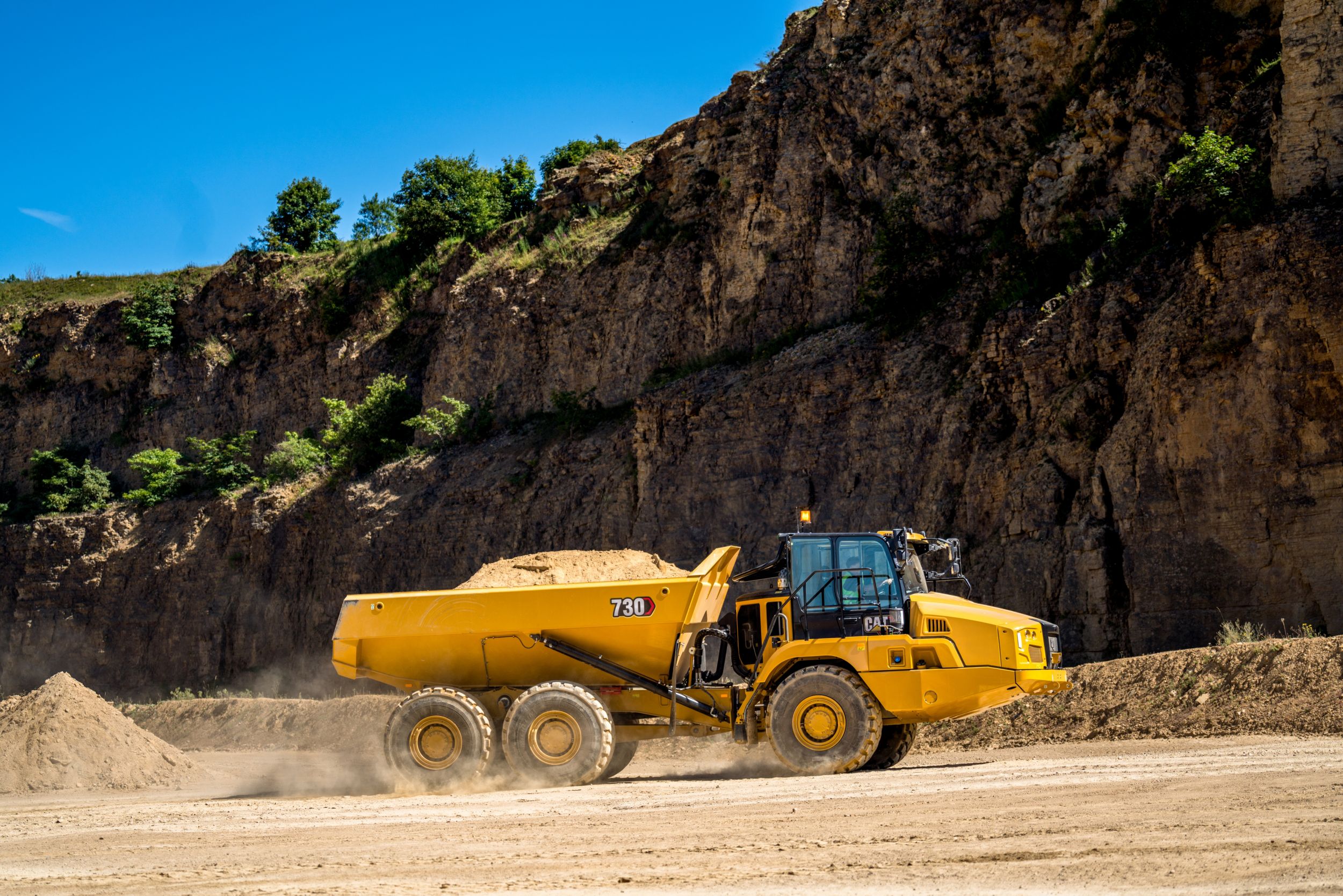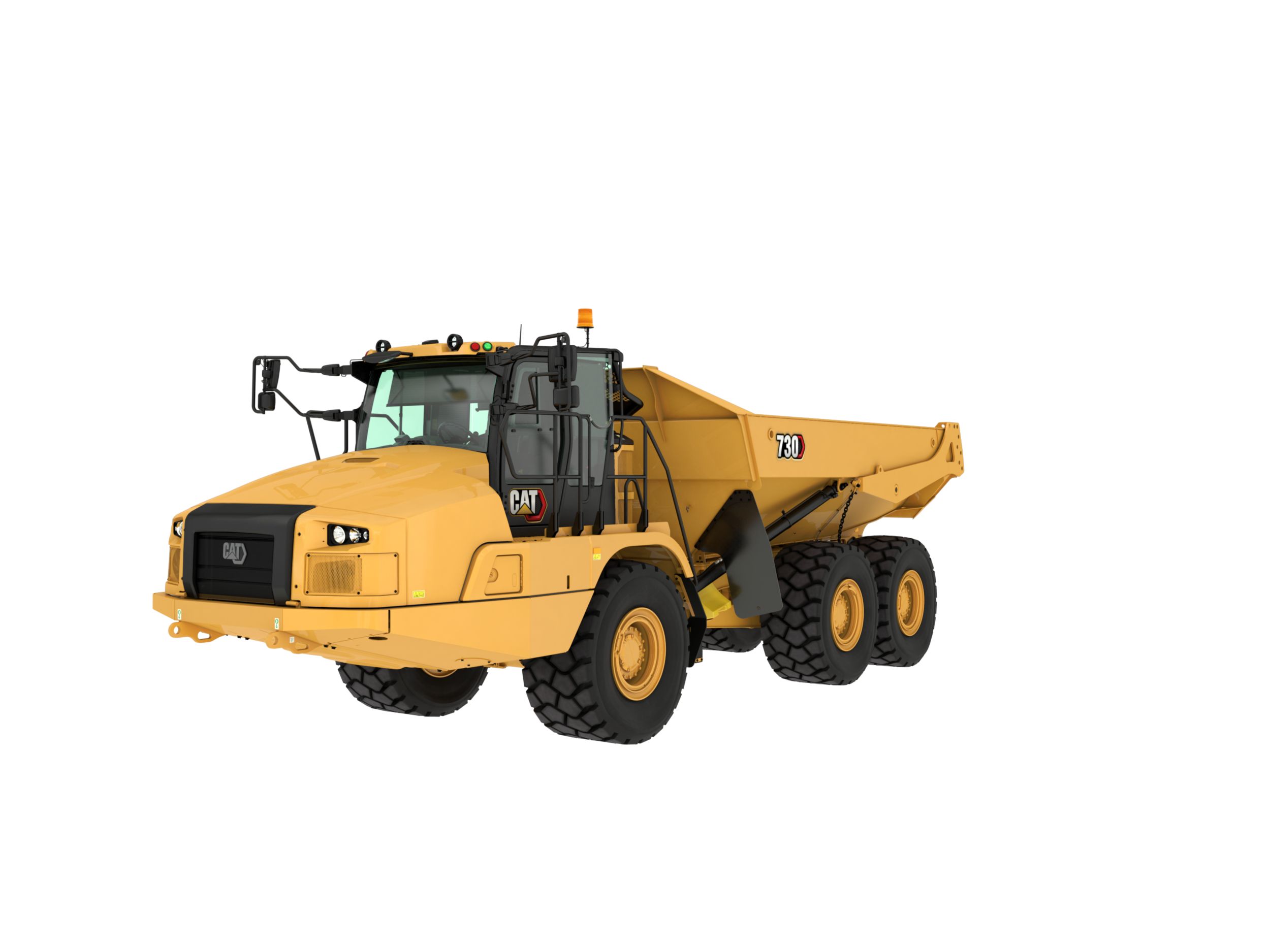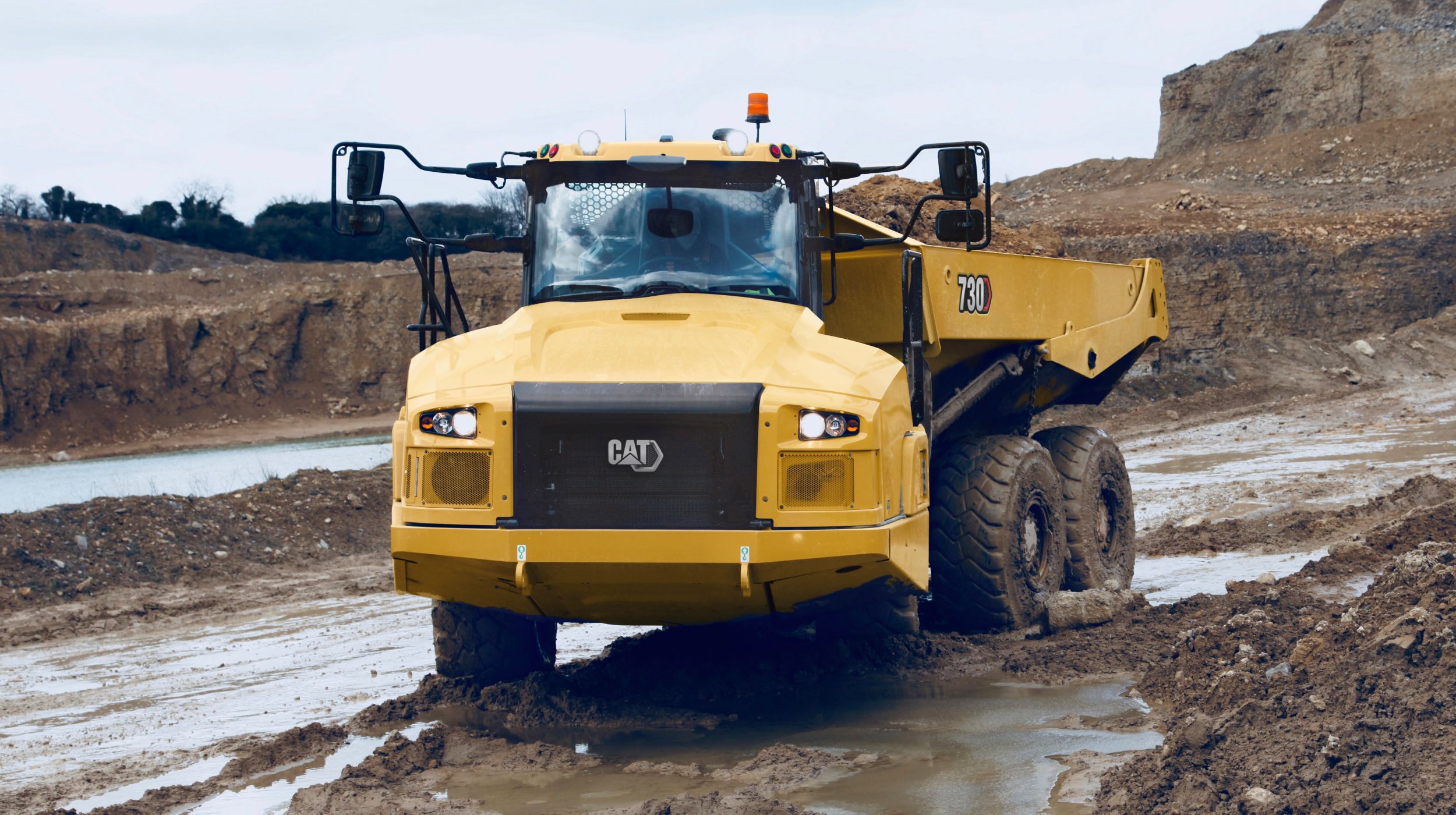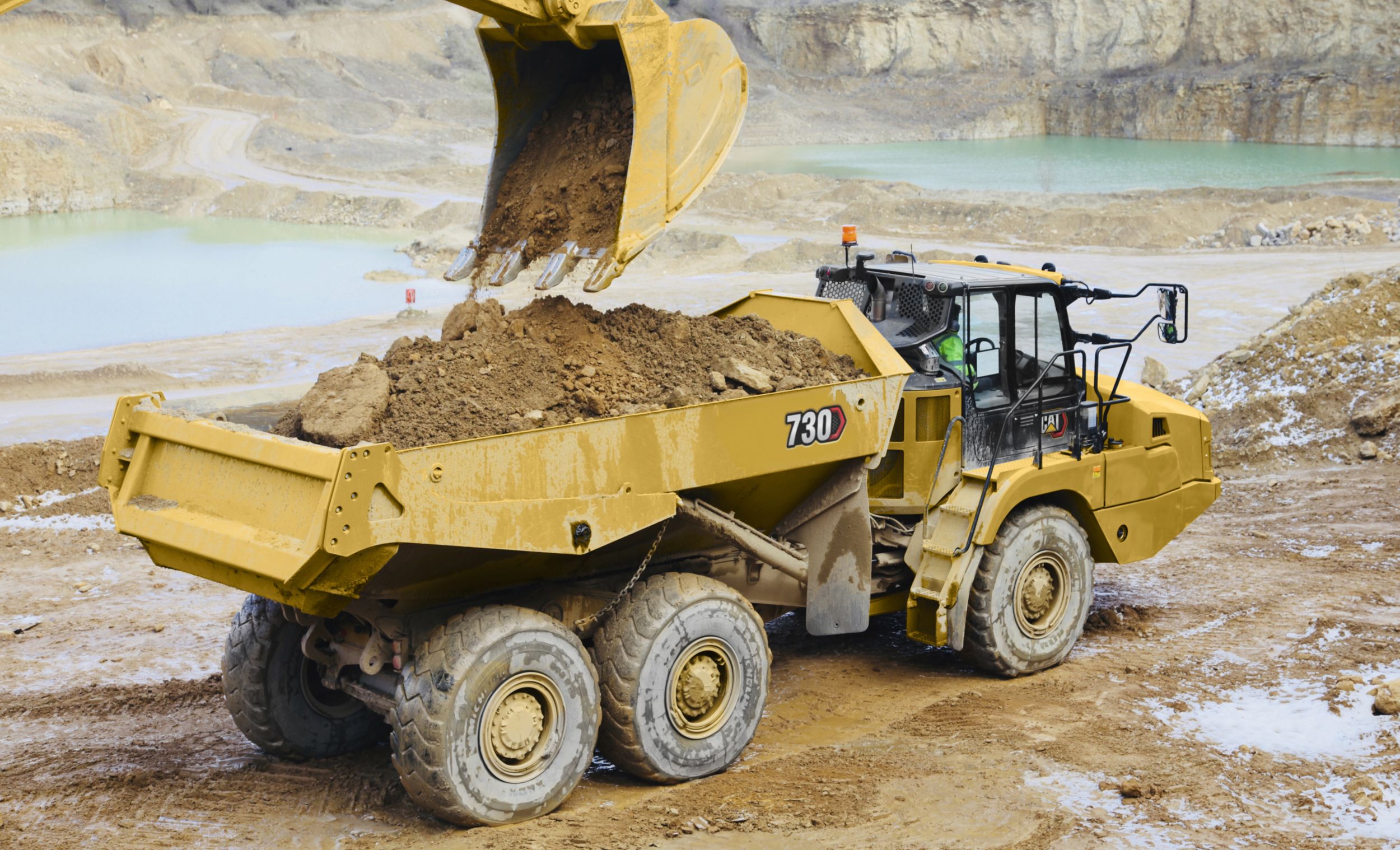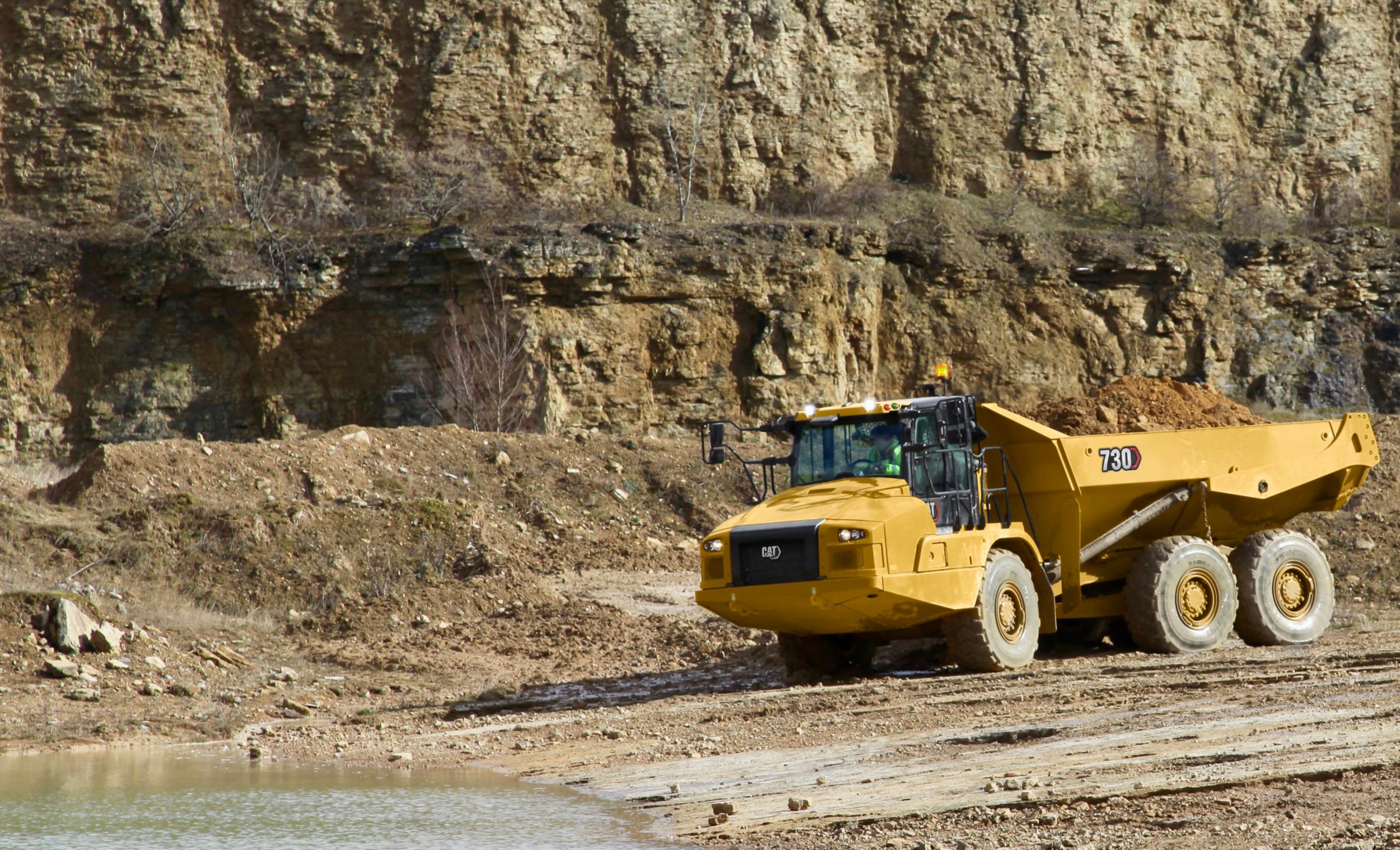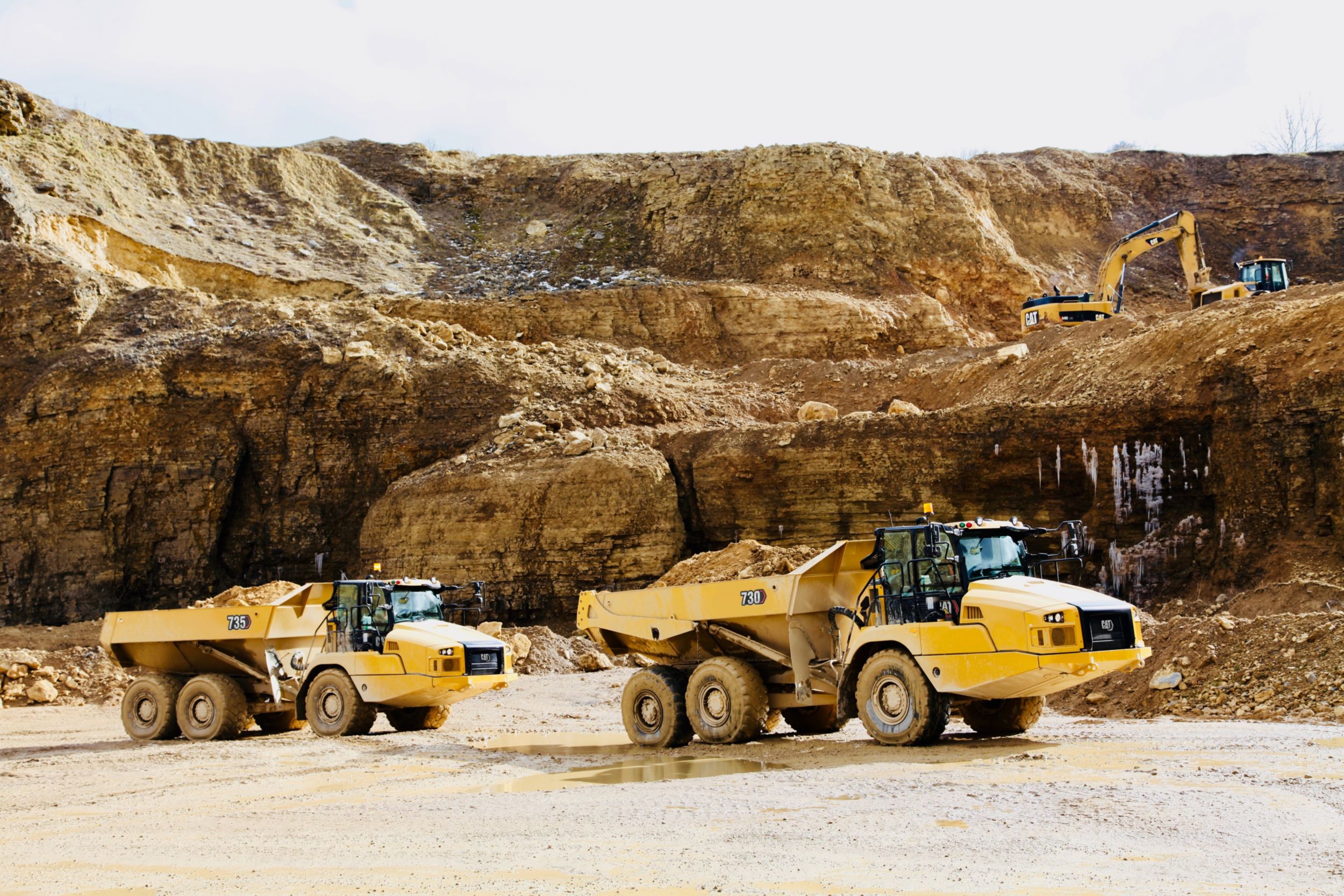730
The Cat 730 with a 17.5 m³ (23 yd³)/28 tonnes (31 tons) capacity, offers demonstrated reliability and durability, high performance and productivity and a new world-class cab to improve operator comfort and ease of operation.<br>Updating the successful 730C2 to include the new cab design makes the 730 a more attractive proposition for our customers. Class leading levels of performance and new features such as Advanced Automatic Traction Control (AATC) and Assisted Hoisting Control create operator comfort, making a productive machine all day long while retaining all axle enclosed wet brakes and Advanced Productivity Electronic Control Strategy (APECS).
MAXIMIZE PERFORMANCE
INDUSTRIAL GRADE TRANSMISSION
AUTOMATIC CONTROLS
POWERFUL EFFICIENCY
WORK IN COMFORT
BUILT TO PERFORM
HEAVY DUTY CONSTRUCTION
TECHNOLOGY THAT GETS WORK DONE
SUSTAINABILITY
- The Cat® C13 engine meets U.S. EPA Tier 4 Final, EU Stage V, Korea Stage V, and Japan 2014 emission standards.
- Cat diesel engines are required to use ULSD (ultra-low sulfur diesel fuel with 15 ppm of sulfur or less) or ULSD blended with the following lower-carbon intensity fuels up to: 20% biodiesel FAME (fatty acid methyl ester) * or 100% renewable diesel, HVO (hydrotreated vegetable oil) and GTL (gas-to-liquid) fuels. Refer to guidelines for successful application. Please consult your Cat dealer or “Caterpillar Machine Fluids Recommendations” (SEBU6250) for details.
- Extended maintenance intervals not only reduce downtime but decrease the amount of fluid and filters that are replaced over the life of the machine.
- VisionLink® displays the CO2 emissions for monitored assets, calculated by fuel type for the Runtime Fuel Burned each day in a selected date range.
- Don't waste fuel idling. Cat VisionLink® online fleet monitoring helps you manage idle time and reduce fuel burn and greenhouse gas emissions.
- Cat® Stability Assist for Articulated Trucks helps improve machine safety and uptime by increasing awareness of machine stability during operation.
- Cat® Production Measurement provides real-time payload weighing which help you maximize productivity, reduce fuel burn and greenhouse gas emissions, all while improving job site efficiency and lowering costs.
